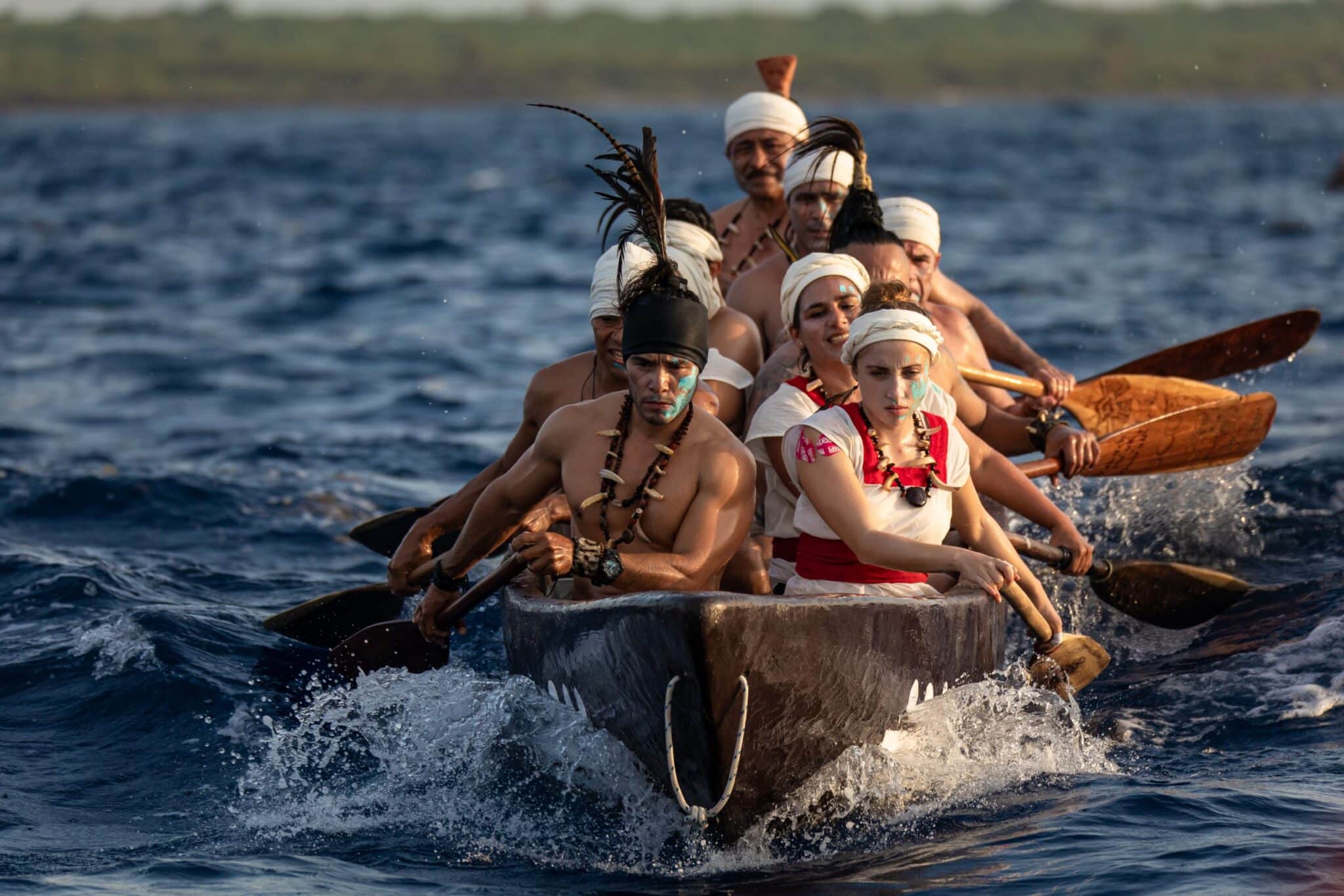The Sacred Mayan Journey: a reborn ritual

The Sacred Mayan Journey re-enacts an old Mayan rite that begins in Xcaret and ends in Cozumel, where offerings are made to the goddess Ixchel. Every year, pilgrims travel by canoe with wooden oars, as the Mayas did millennia ago. The canoeists cross to Cozumel after months of hard training.
The Sacred Mayan Journey: What can you expect
The morning opens with a musical and dance farewell to the canoeists before daybreak, followed by a recreation of a Mayan market.
Chankanaab in Cozumel, boasts stunning beaches with crystal-clear turquoise waters, making it an ideal spot for swimming, snorkeling, and diving adventures. You can find vibrant underwater world teeming with colorful coral reefs and a diverse array of marine life. There is even a Dolphin Discovery park. Here you can swim and interact with dolphins in a responsible and educational environment. Additionally, Chankanaab features archaeological replicas that provide insight into the ancient Mayan civilization, along with a sea lion show and a crocodile exhibition.
From Chankanaab to Xcaret
The pilgrimage arrives here, Chankanaab Park, to pay homage and make offerings to the goddess Ixchel. After listening to the oracle of the Mayan deity and spending the night, they will return to the ancient port of Polé (today Xcaret) to announce the good news to the villagers.
By the way, if you want to make the most of your day in Xcaret, there are several key experiences to seize. Start by immersing yourself in the park’s natural wonders, such as snorkeling in the underground rivers, surrounded by mesmerizing rock formations and vibrant marine life. Explore the lush jungle trails, discovering hidden cenotes and encountering exotic wildlife along the way.
Don’t miss the captivating evening show, showcasing the vibrant traditions, music, and dance of Mexico, leaving you in awe of the country’s cultural heritage.
Some updates were made
Despite the fact that the ceremony was not conducted for about 500 years after the conquest, it has now reappeared. People perform the ceremony with the utmost respect for the original customs. As a result, there are few differences in today’s ceremony. Most notably, because there is no longer an oracle in Kuzamil, the goddess Ixchel does not interact with the messengers. And the canoeists do not return to Xamanhá but rather to Polé. The paddlers go in traditional canoes, using wooden paddles and wearing clothing similar to that of their forefathers.
The Sacred Mayan Journey: It’s hard to get in
Paddling from Cozumel to Playa del Carmen is a physically demanding feat that requires strength, endurance, and meticulous preparation. The journey spans approximately 13 miles of open water, with unpredictable currents and varying weather conditions. It demands a high level of cardiovascular fitness, as paddlers must maintain a steady pace for an extended period. Core strength and upper body muscular endurance are crucial for propelling the boat through the water with each stroke. Mental fortitude is equally important, as rowing for long hours can be mentally challenging and requires focus and determination. Adequate training is essential, including regular rowing sessions to build stamina, strength training to develop the required muscles, and endurance workouts to improve overall physical fitness.
Paddlers must register roughly 6 months prior to the crossing because they must undergo a rigorous half-year training regimen. They must also pass a fitness and swim exam, as the crossing is extremely difficult. Yet, today’s paddlers get their inspiration by passion and determination to keep the tradition alive. Nowadays, more than 40 canoes carry roughly 450 persons.
How to attend
The departure rituals in Polé, the arrival and celebrations in Kuzamil, and the return to Xamanhá/Polé are all open to the public. For the departure and return, Xcaret Park tickets are necessary, as well as transportation to Cozumel and tickets to the events held there. Even though the majority of the activities occur either early in the morning or late at night, they are highly worth attending. You will have a one-of-a-kind opportunity to observe a genuine pre-Hispanic rite here. It is also possible to participate, but keep in mind that you will need to be present in Cancun or the Riviera Maya for the preparations for at least 6 months.
When does it take place
The Sacred Mayan Journey takes place in May or June each year.
More info in the Xcaret webpage.
